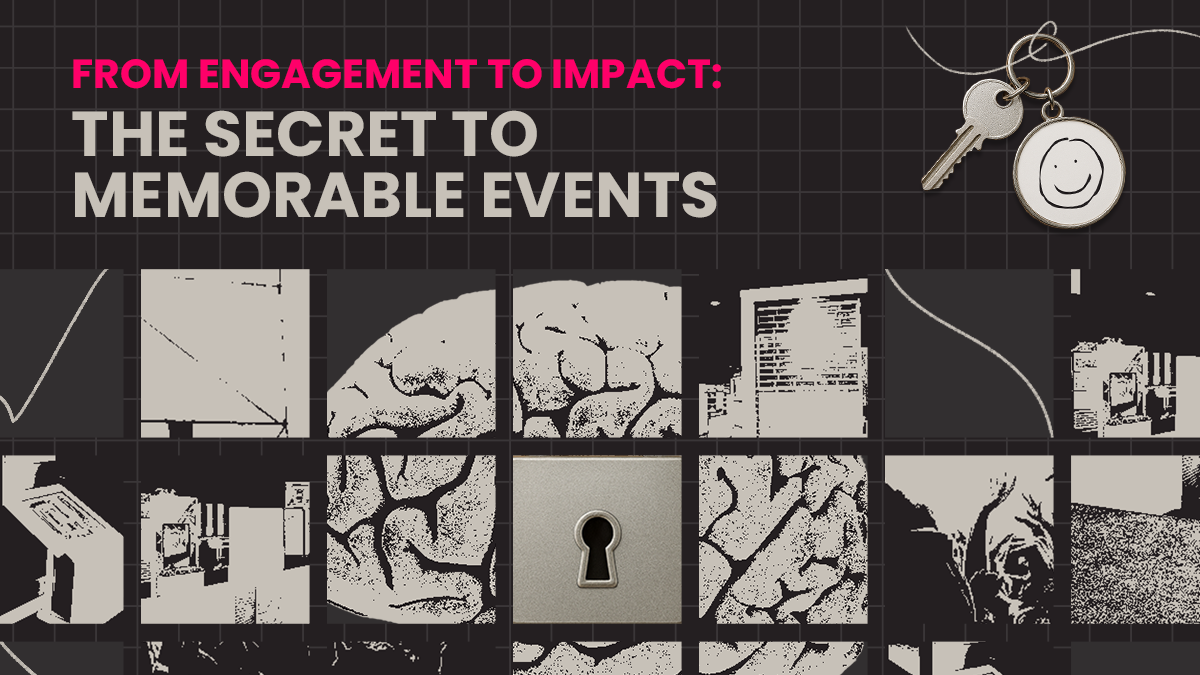Every trade show is packed with logos, lights, and noise. Will your booth be one they remember next week—or one they walk right past?
It’s easy to assume the answer to this lies in bigger budgets or flashier tech. But what actually makes a booth memorable has less to do with spend—and everything to do with how the human brain works. We don’t remember most of what we see or hear in everyday life, and trade shows are no different.
So how do you design a booth that people actually remember?
What sticks are the things that feel good, make sense fast, and connect to something people already trust. Most of the rest fade away. When your booth creates those kinds of moments, people will carry your brand with them long after they leave the floor.
Let’s break down the exhibit choices that matter most for memory.
Design for Feeling, Not Just Looks
People forget most of what they see, but experiences that trigger emotion are 40% more memorable. The brain marks emotional moments as worth saving. That’s why it helps to choose the feeling you want people to have—calm, energized, cared for, curious—and make sure every detail in your space supports that. Lighting, music, textures, even a simple greeting can all signal that feeling right away.
Memories also get stronger when more than one sense is involved. We usually remember only a small slice of what we see or hear. But recall can more than double when another sense is added to the mix.
Exhibitors can use this by pairing visuals with texture, adding a subtle scent to the air, or offering a small drink or sound cue at the right moment. These details shift how a booth feels without needing more noise or flash.

Symmetry Helps the Brain Relax
Our brains like patterns. When something feels balanced, it takes less effort to process. Studies show that symmetrical logos are 23% more memorable than asymmetrical ones. The same idea applies to booth design.
When a layout is symmetrical, the brain doesn’t have to work to understand it. That creates a sense of ease. People tend to stay longer in spaces that feel clear and calm—and that gives you more time to connect with them.
Where You Set Up Shapes Perception
People form quick opinions based on what a brand appears next to. That’s the halo effect. When two brands sit side by side—whether on the floor, on signage, or during a sponsored moment—people connect their feelings about one to the other.
Booths positioned near trusted or high-interest brands tend to draw more traffic, even if nothing else about the booth changes. The association alone shifts how people approach the space.
Placement isn’t just a logistical decision. It sets an expectation before a single conversation happens. The brands around you influence how visitors feel about yours—whether you plan for it or not. It’s a decision worth making with intention.

Design with Memory in Mind
Trade show environments seem built to help visitors forget. Brands that engineer moments on purpose are the ones people remember.
In 2026, event managers who think like ecosystem orchestrators—not just experience creators—will drive significantly more business value and career advancement.
Ready to dive deeper?
Our on-demand webinar, From Engagement to Impact, explores these concepts in detail — complete with actionable insights and expert perspectives.


